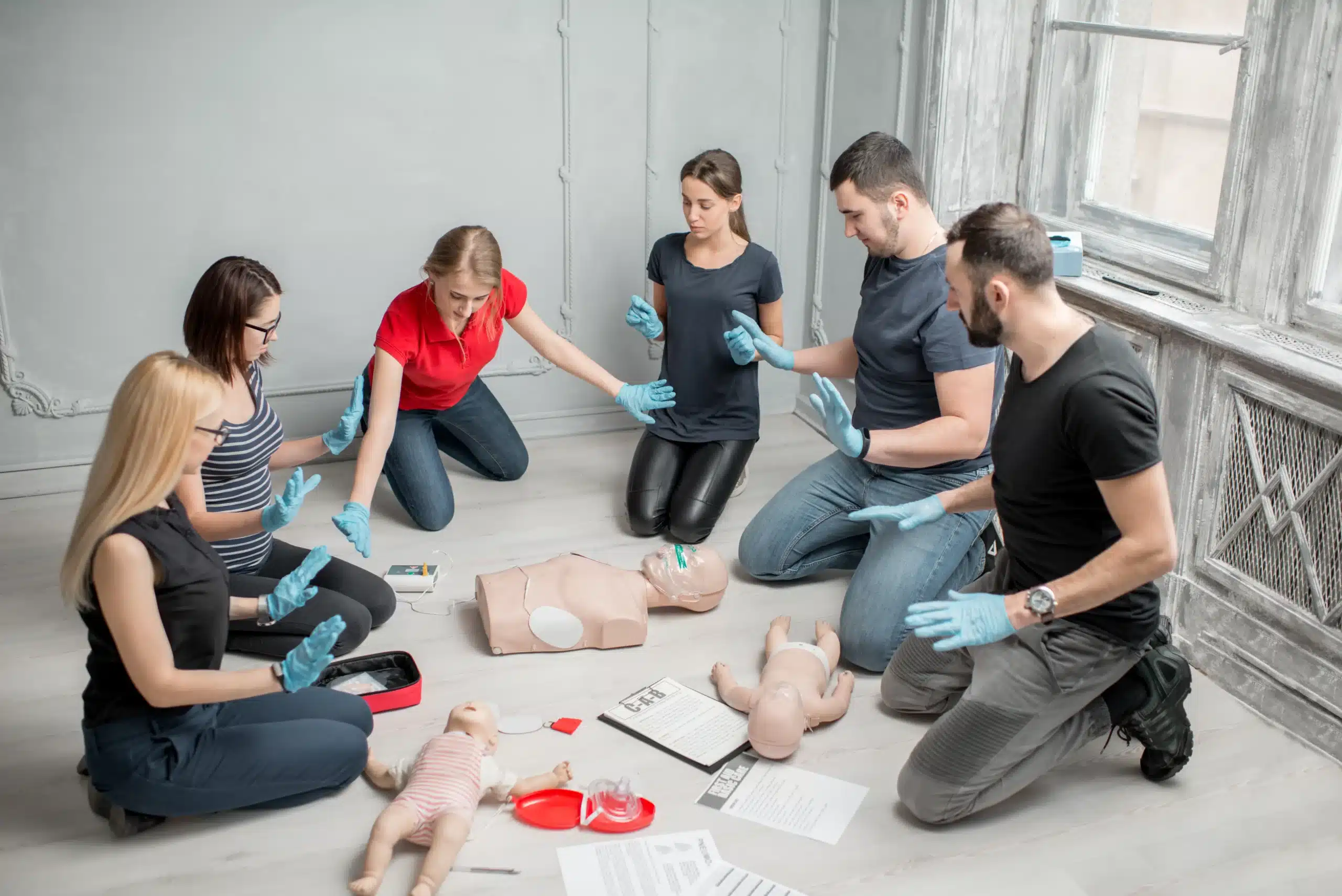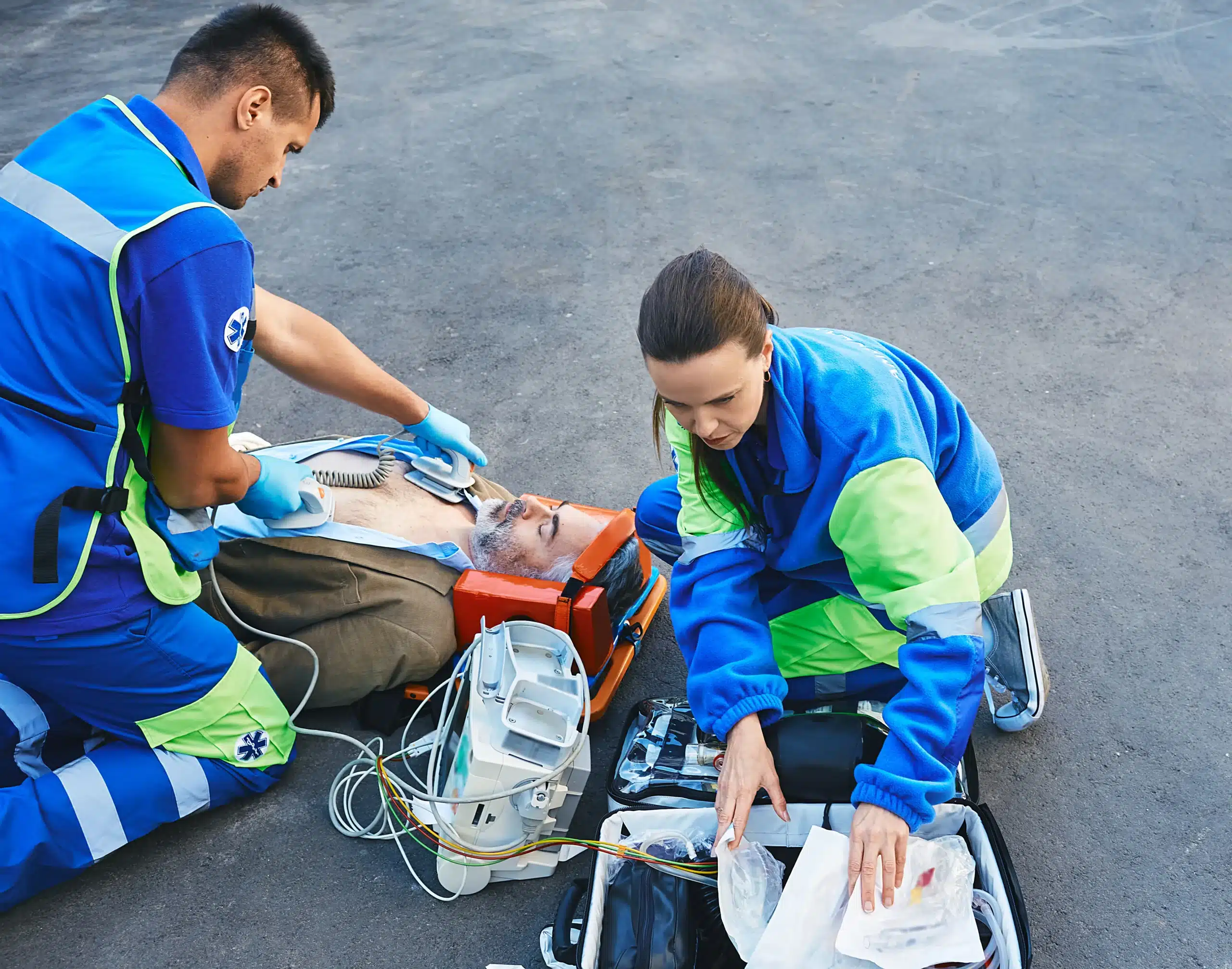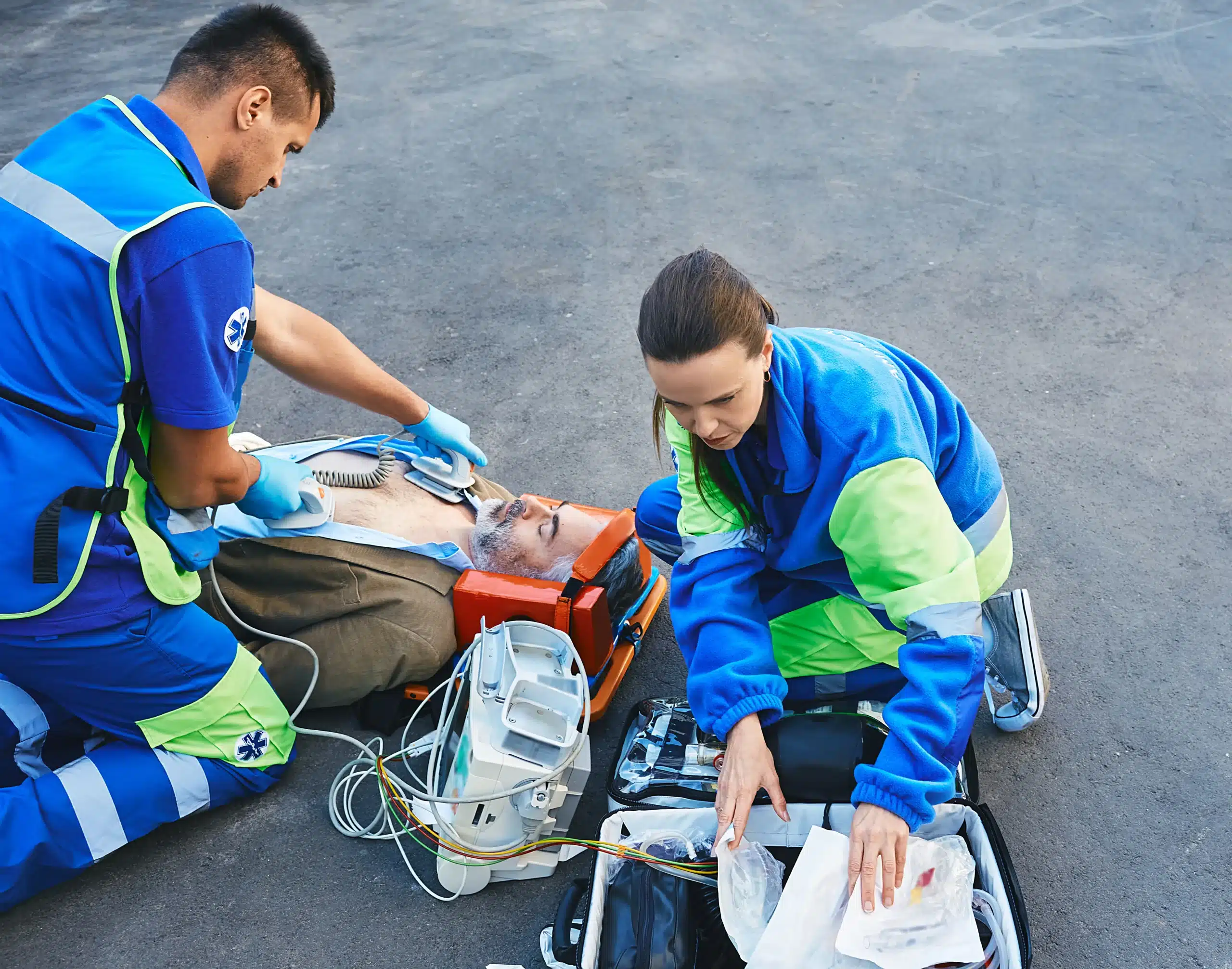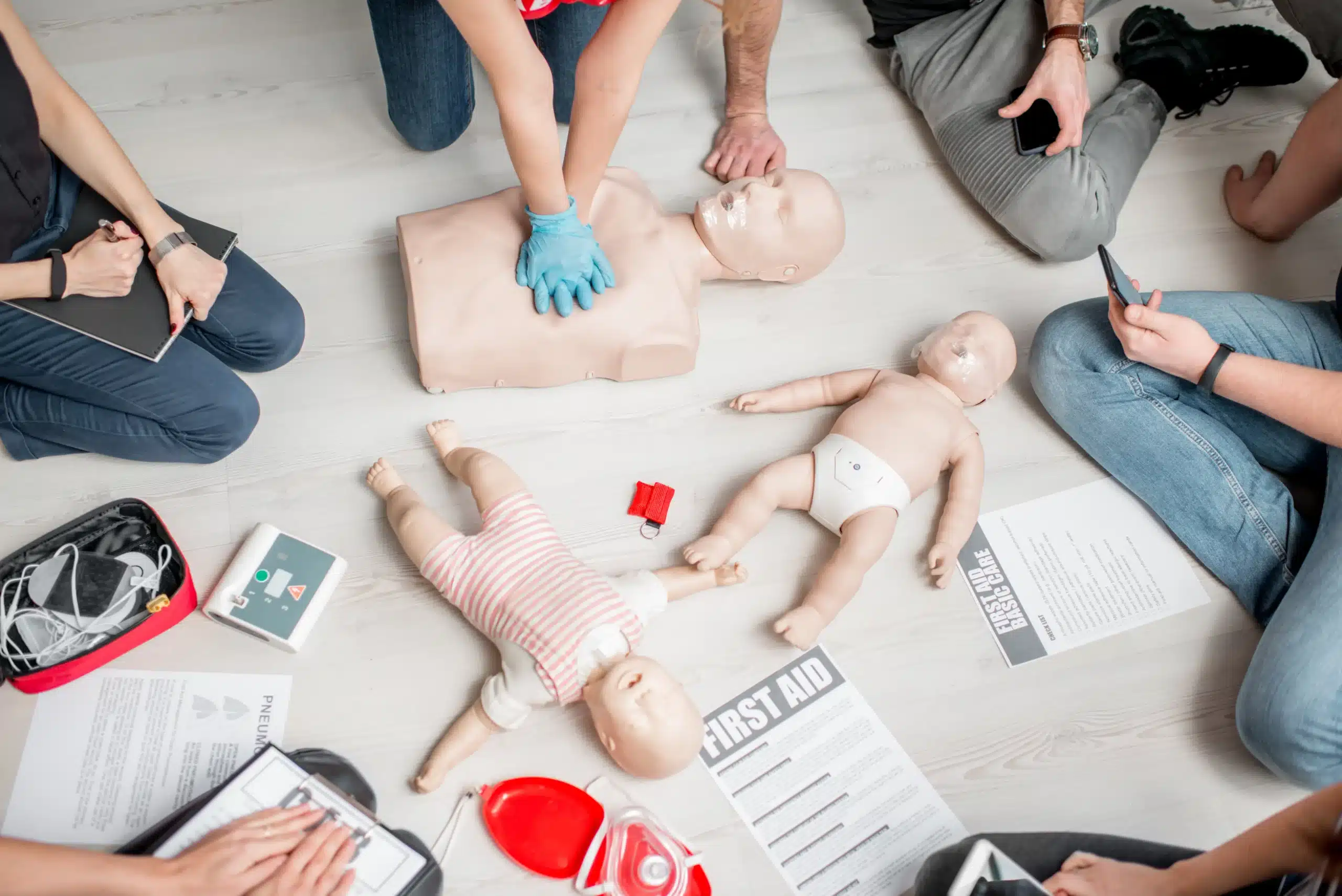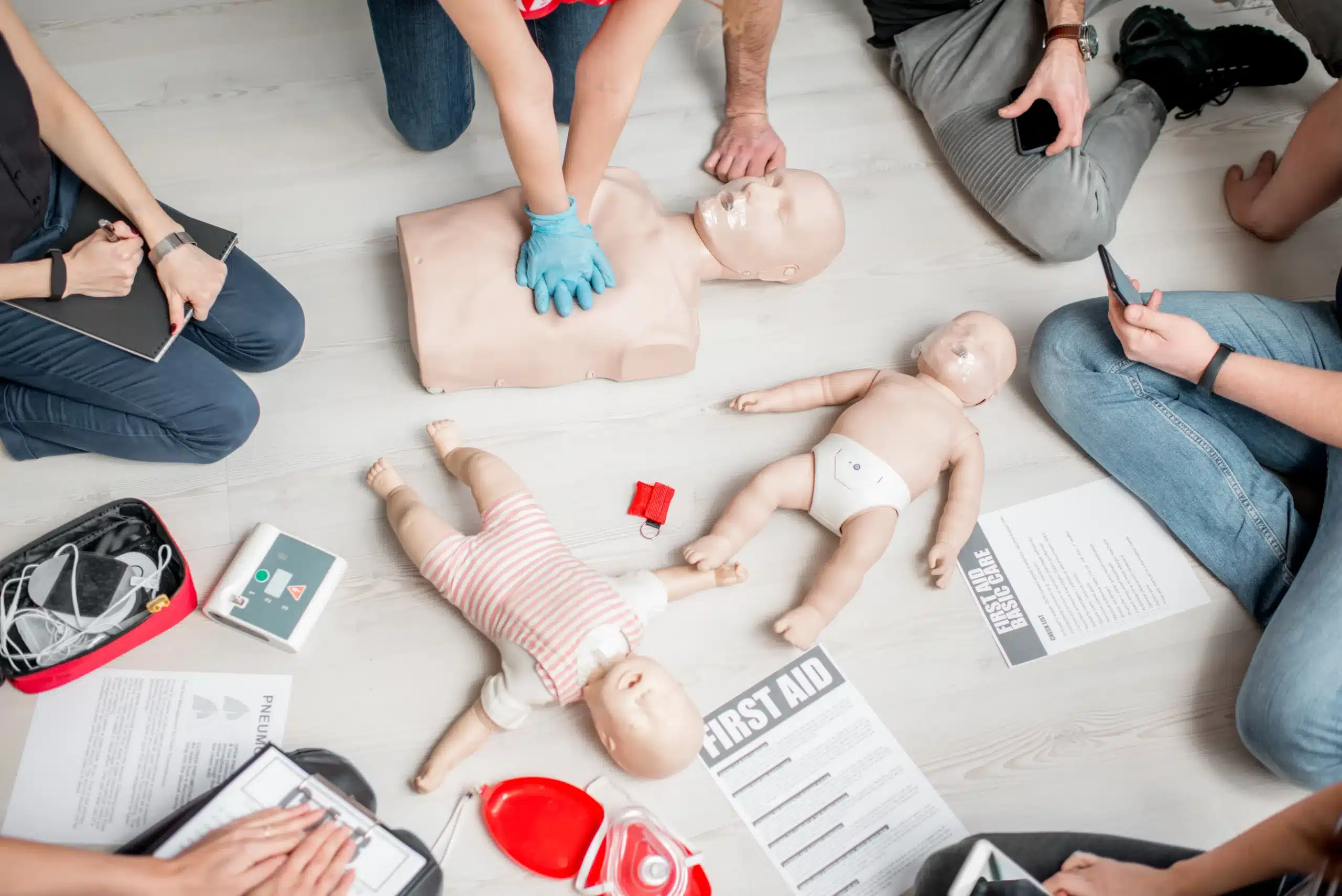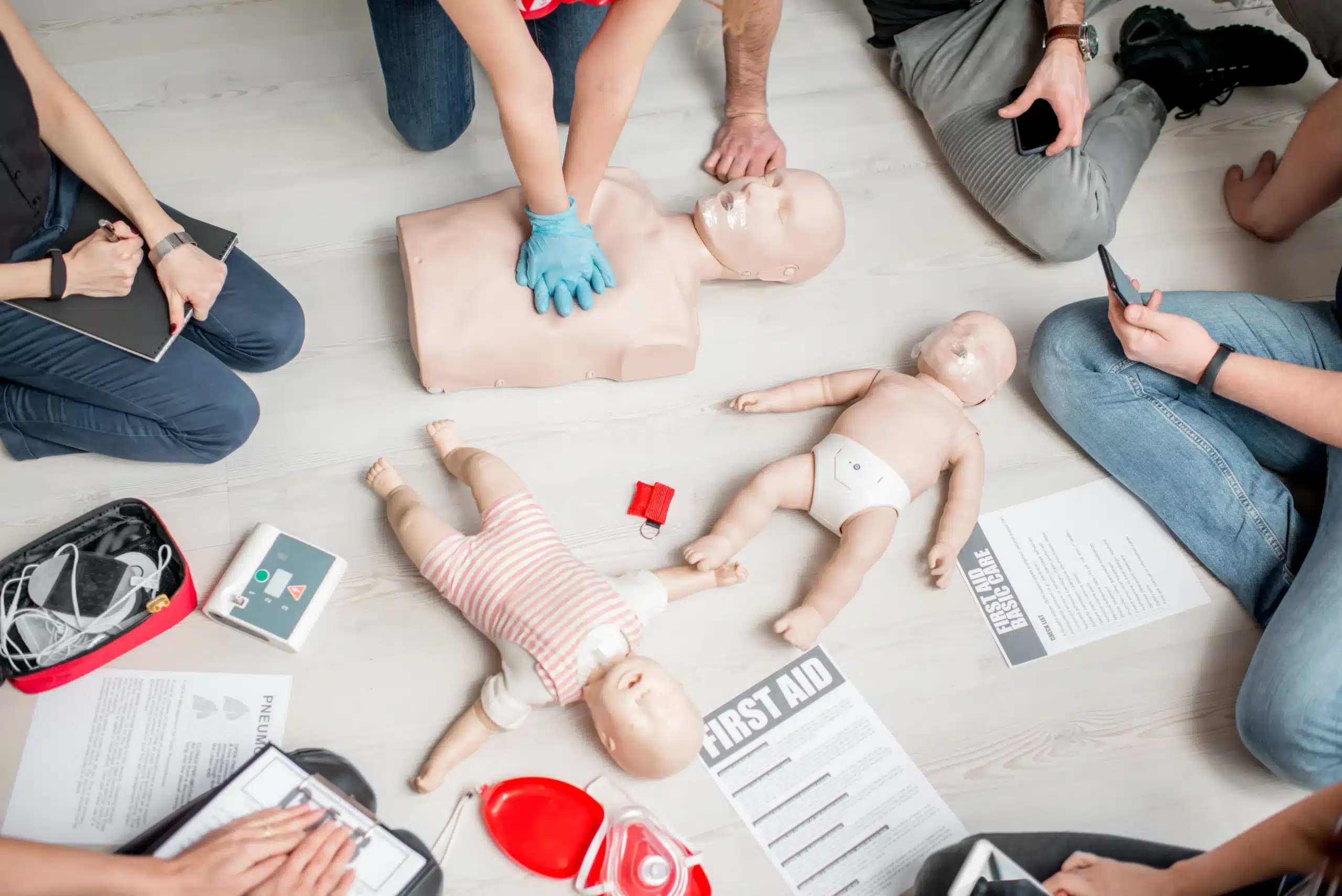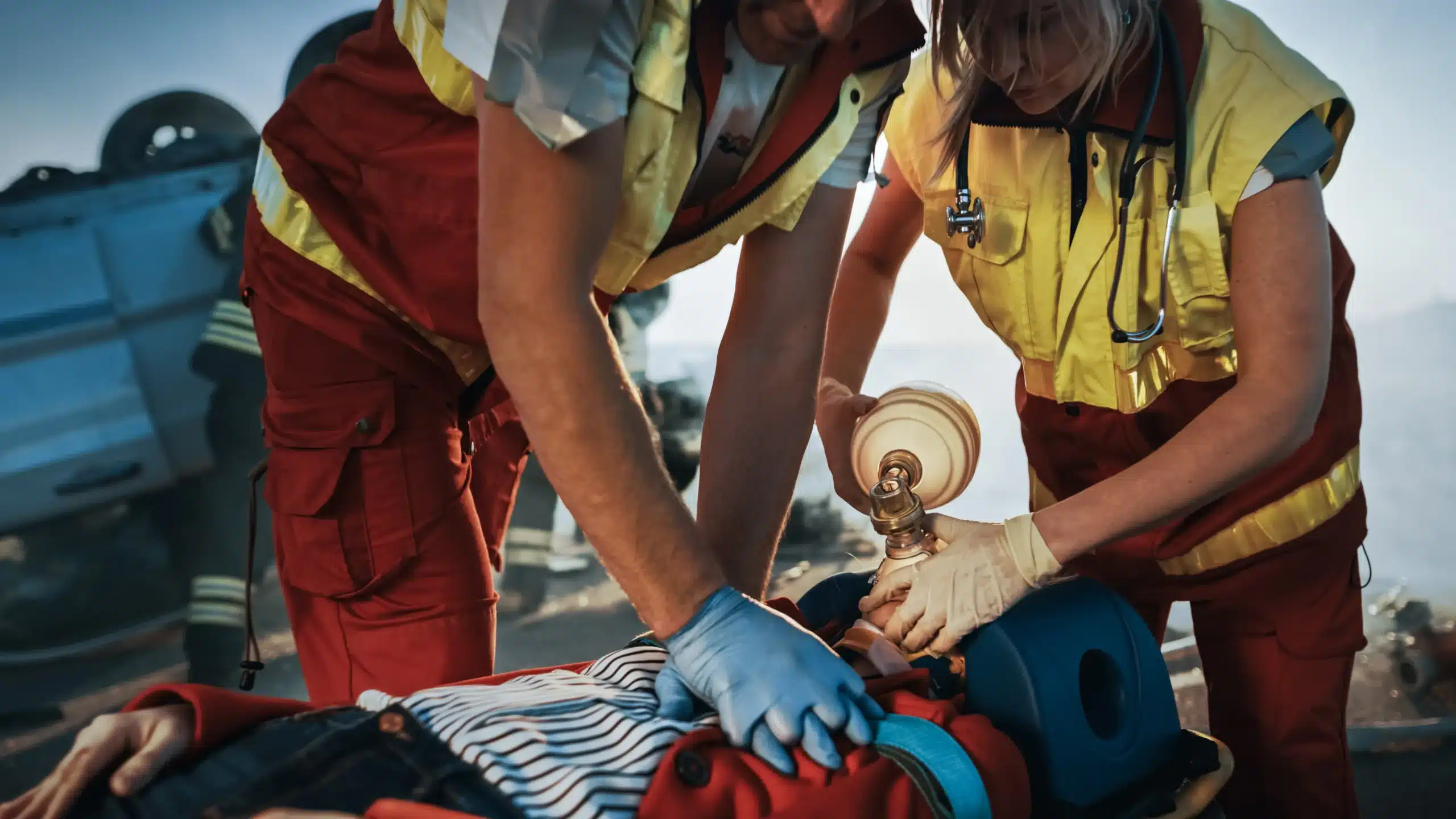Ready to empower yourself with life-saving skills? Learning first aid can be one of the most rewarding decisions you ever make. This post serves as your roadmap to finding the right first-aid training, starting with your search for “first-aid classes near me.” We’ll explore the different types of first-aid courses available, discuss the factors to consider when choosing a provider, and provide practical tips for making the most of your training. We’ll also address common concerns about cost and certification, ensuring you have all the information you need to get started.
Key Takeaways
- First aid is a skill for everyone: Learning first aid, whether for personal or professional use, empowers you to respond effectively to emergencies and potentially save lives. Find a course that fits your lifestyle and goals.
- Choosing the right course matters: Consider your individual needs, required certifications, and preferred learning format (online, in-person, or blended) when selecting a first-aid course. Reputable providers offer various options to meet diverse needs.
- Stay prepared by keeping your skills current: Regularly practice your first-aid techniques and recertify when necessary to maintain your proficiency and confidence in responding to emergencies. Continued learning ensures you’re always ready to help.
What are First-Aid Classes?
First-aid classes teach you how to respond to medical emergencies. You’ll learn to assess injuries, control bleeding, manage shock, and handle other urgent situations. These skills empower you to provide timely assistance, potentially minimizing harm and even saving lives. CPR and first-aid training provides you with the skills to respond effectively in critical situations, offering immediate care until professional help arrives.
Types of First-Aid Training
Various first-aid courses cater to different needs and skill levels. Basic courses cover essential first-aid techniques, while advanced training delves into more complex procedures, such as using an AED or administering CPR. Specialized courses focus on specific environments, like wilderness first aid or childcare settings. Safety Training Seminars offers a variety of CPR and first aid courses including BLS, ACLS, PALS, CPR, and standard First Aid. For those interested in childcare health and safety, consider exploring the EMSA Child Care Health & Safety course. CPR and first-aid classes are also available through providers like Safety 1st Seminars, offering options for individuals and groups.
Why First-Aid Skills Matter
Knowing first aid is invaluable in everyday life. From minor cuts and burns to more serious incidents, having first-aid knowledge allows you to confidently address injuries and illnesses. You can provide immediate care for family, friends, coworkers, or even strangers, bridging the gap until professional medical assistance arrives. These skills not only equip you to handle emergencies but also foster a sense of preparedness and community responsibility. Proper first aid treatment is crucial to prevent further complications and alleviate pain. Debunking common misconceptions about CPR and first aid is crucial for fostering a more accurate understanding of this essential skill set.
Find First-Aid Classes Near You
So, you’re ready to learn life-saving skills? Great! Finding the right first-aid class shouldn’t be a headache. Here’s how to locate quality training near you:
Search Online Effectively
Start your search online. A quick Google search for “first-aid classes near me” will generate a list of potential training providers in your area. You can also check websites like the American Red Cross, which offer a searchable database of classes, including CPR/AED, basic first aid, and more specialized courses. This allows you to filter by location, date, and course type, making it easy to find a class that fits your schedule.
Find Local Classes
While online searches are helpful, don’t underestimate the power of local resources. Check your local community centers, hospitals, or fire departments, as they often offer first-aid and CPR training. For those in the Bay Area, Safety Training Seminars offers various courses in San Francisco, Walnut Creek, Concord, and Pleasant Hill. Supporting local businesses is always a plus!
Identify Reputable Providers
Choosing a reputable provider is key to receiving quality instruction. Here are a few well-regarded organizations to consider:
Safety Training Seminars in Walnut Creek
If you’re near Walnut Creek, Safety Training Seminars is a woman-owned American Heart Association Training Center offering various courses, including BLS, ACLS, PALS, and First Aid. They’re known for their commitment to affordable pricing and comprehensive training. Be sure to check out their low price guarantee.
American Red Cross
The American Red Cross is a trusted name in emergency preparedness and offers a wide array of first-aid and CPR courses nationwide. Their focus on community safety makes them a reliable choice.
American Heart Association
The American Heart Association (AHA) provides another excellent option for first-aid and CPR training. Many organizations, like Healthline First Aid in Milwaukee, offer AHA-certified courses, ensuring you receive nationally recognized instruction.
St. John Ambulance
St. John Ambulance is another reputable organization dedicated to first-aid training. They offer various courses tailored to different needs and experience levels, making it easy to find the right fit.
Explore First-Aid Course Types
Knowing which first-aid course is right for you depends on your specific needs and goals. Let’s explore the main types of first-aid training available.
Basic First-Aid
Basic first-aid courses cover essential lifesaving skills. You’ll learn how to respond to common injuries like cuts, burns, sprains, and fractures. These courses also teach you how to recognize and manage medical emergencies such as choking, allergic reactions, and seizures. A basic first-aid certification is a great starting point for anyone looking to gain fundamental first-aid knowledge. It’s suitable for personal use, as well as meeting workplace requirements in many professions. Consider basic first aid if you’re a teacher, coach, or childcare provider.
CPR and AED Training
CPR (Cardiopulmonary Resuscitation) and AED (Automated External Defibrillator) training teaches you how to respond to cardiac arrest. You’ll learn how to perform chest compressions, rescue breaths, and use an AED. This training is crucial for anyone working in healthcare, education, or childcare, but it’s a valuable skill for anyone to have. CPR and AED training can empower you to save a life in a critical situation. Many providers offer combined CPR/AED and first-aid courses for comprehensive training. Think about adding CPR/AED training if you’re a parent, caregiver, or simply want to be prepared for emergencies.
Specialized First-Aid Courses
Beyond basic first-aid and CPR/AED training, you can find specialized courses tailored to specific needs. These might include wilderness first aid, pediatric first aid, or occupational first aid. Specialized courses delve deeper into managing injuries and emergencies in particular environments or with specific populations. For example, a wilderness first-aid course will equip you with the skills to handle injuries in remote locations, while a pediatric first-aid course focuses on caring for infants and children. Safety Training Seminars offers a range of specialized courses to meet diverse needs. Consider your personal or professional requirements when choosing a specialized course. If you’re a lifeguard, outdoor enthusiast, or work in a high-risk profession, specialized training might be a good fit.
Choose the Right First-Aid Class
So, you’ve decided to take a first-aid class—great! But with various options available, how do you pick the right one? This section breaks down key factors to consider.
Assess Your Needs
First, think about why you want first-aid training. Are you required to have it for your job, or are you simply preparing for emergencies at home? Do you need basic first aid or more comprehensive training that includes CPR and AED instruction? If you work in childcare, for example, you might need a specialized course like the EMSA Child Care Health & Safety program. Clearly defining your needs helps narrow down your options.
Understand Certification
Most first-aid certifications, like those from the American Red Cross or American Heart Association, are valid for about two years. Keep this in mind when choosing a class, as you’ll need to recertify to keep your skills current. Also, check if your employer or any professional organizations require certification from a specific provider. Knowing these details ahead of time will save you potential headaches down the road.
Consider Course Format
Finally, consider your learning style and schedule. Do you prefer the flexibility of an online course, or would you benefit more from the hands-on experience of an in-person class? Some providers offer blended learning, combining online modules with in-person skills practice. Think about what works best for you and choose a format that will set you up for success. Safety Training Seminars, for example, offers various course formats to fit different needs.
Understand Costs
Knowing the price range for first-aid training can help you budget effectively. Several factors influence the final cost, so understanding them will help you find the best value.
Typical Price Range
A basic first-aid course usually costs between $40 and $60 per person, while CPR and AED training often falls around $80 (CPR Certification West Palm Beach). More specialized courses, like wilderness first aid or pediatric first aid, typically have higher prices due to the advanced skills taught. Remember, this is a general estimate, and prices vary based on location and the certifying organization. Our low price guarantee ensures you’re getting the best possible value for your training at Safety Training Seminars.
Factors Affecting Cost
Several factors contribute to the overall cost of first-aid training. The certifying organization (the American Red Cross or American Heart Association), course format (online versus in-person), and the level of certification all play a role. For example, becoming a certified CPR instructor involves additional costs—ranging from $1,300 to $5,100—to cover training materials, certification fees, and ongoing expenses (Online CPR Certification). If you’re looking for specific certifications like BLS or ACLS, the cost may differ from standard first-aid and CPR courses.
Find Discounts and Assistance
While free first-aid certification is rare, there are ways to reduce costs or find financial assistance. Look for discounts offered by local community centers, healthcare providers, or organizations like the American Red Cross. Some employers cover the cost of first-aid training, especially if it’s relevant to the job (Reddit: Frugal). Consider exploring options like our EMSA Child Care Health & Safety course, which may offer specific discounts or be eligible for employer reimbursement. Don’t hesitate to contact training providers directly—like Safety Training Seminars—to inquire about potential discounts or payment plans for programs like our RQI classes.
Benefit from First-Aid Training
Learning first aid offers significant personal and professional advantages. It empowers you to handle emergencies effectively and can even open doors to new career opportunities. Let’s explore some key benefits:
Prepare Yourself
First-aid training equips you with the skills to respond confidently in emergencies. You’ll learn to assess situations, provide immediate care, and potentially save lives. This knowledge can make a real difference while waiting for professional medical help to arrive, as highlighted in this guide to CPR and first aid. Whether it’s a minor injury or a life-threatening situation, you’ll be prepared to act quickly and effectively.
Advance Your Career
First-aid certification is a valuable asset in many professions. For those in healthcare, BLS certification is often a requirement. Even outside the medical field, having first-aid skills can enhance your resume and demonstrate your commitment to safety. Safety Training Seminars offers a range of courses at competitive prices, making these essential skills accessible. This can be particularly helpful for roles in childcare, education, fitness, and other fields where safety is paramount.
Make a Difference
Knowing first aid means you can make a real difference in your community. You become a valuable resource for friends, family, and even strangers. By understanding how to respond to emergencies, you can help debunk common first-aid myths and promote accurate information, similar to the work done by By Grace CPR Compliance. Research shows that first-aid training has a lasting impact, empowering individuals to provide effective care long after completing a course. This ripple effect creates a safer environment for everyone.
Know What to Expect
Now that you’ve found a course, you’re probably curious about what happens in a first-aid class. Understanding the course structure, the emphasis on hands-on learning, and the certification process will help you feel prepared and confident.
Course Structure
First-aid courses are designed to be accessible and manageable, regardless of your background. Providers like Safety Training Seminars offer a range of CPR and first-aid courses structured to accommodate different schedules and learning styles. Whether you’re a healthcare professional needing CPR certification or a parent wanting to learn the basics of first aid, you’ll find a course that fits. Expect a combination of lectures, demonstrations, and interactive discussions covering essential first-aid topics.
Hands-on Practice
A key element of effective first-aid training is hands-on practice. Research shows that interactive learning and skill application are crucial for retaining knowledge and building confidence. Studies highlight the importance of this practical training. You’ll have opportunities to practice techniques like CPR, bandaging, and splinting in a safe and supportive environment. This experience will help you develop the muscle memory and confidence to apply these skills in real-life emergencies.
Get Certified
Upon successful completion of your chosen course, you’ll receive a certification. Make sure the course you select, whether it’s general first aid or a specialized course like ACLS, meets industry requirements for your profession. This certification validates your skills and knowledge to employers, organizations, and anyone who needs assurance of your first-aid capabilities. It’s important to check the specific certification requirements for your field, especially if you work in healthcare, education, or childcare.
Maintain Your Skills
Once you’ve earned your first-aid certification, commit to keeping your skills fresh. Regularly reviewing and practicing techniques can make a real difference when you need to respond to an emergency.
Recertification
Most first-aid certifications, like those from the Red Cross, are valid for about two years. Make sure you understand the recertification requirements for your specific certification and sign up for a refresher course before it expires. This keeps your knowledge current and ensures you’re up-to-date on any changes to first-aid best practices. At Safety Training Seminars, we offer a variety of recertification courses to help you maintain your skills.
Practice and Review
Even if your certification isn’t due for renewal, regular practice is key. Think of it like any other skill—the more you use it, the more proficient you become. Try reviewing the material from your first-aid course periodically. You can also practice techniques with friends or family members. This will not only reinforce your knowledge but also build your confidence in applying those skills under pressure. Hands-on practice is one of the best ways to prepare for real-life emergencies. Consider supplementing your training with downloadable resources and consider engaging in refresher training sessions for ongoing learning. This will help bridge the gap between training and real-world application, ensuring you’re ready to respond effectively when needed.
Debunk First-Aid Myths
Let’s clear up some common misconceptions about first-aid training. These myths can prevent people from learning a potentially life-saving skill set.
“Only for Medical Professionals?”
It’s easy to think that first aid is solely the domain of doctors and nurses. The truth is, first aid is a vital skill everyone can and should learn. While medical professionals have advanced training, knowing basic first aid can make a huge difference in those critical minutes before professional help arrives. Empower yourself with the confidence to respond effectively during emergencies. You don’t need to be a healthcare provider to save a life. Consider taking a course like our Basic First Aid class to get started.
“First Aid is Too Complicated?”
Many people shy away from first-aid training, assuming it’s overly complex. This just isn’t true. First-aid courses are designed to be accessible and straightforward, focusing on practical techniques anyone can grasp. Training providers break down essential skills into easy-to-understand steps, making them easy to remember and apply in real-life scenarios. Check out our course schedule to see how simple it is to get trained.
“No Need to Refresh?”
Think back to that first-aid course you took years ago. Do you remember everything? First-aid techniques and best practices can evolve, so refreshing your skills is crucial. Regular recertification ensures your knowledge stays current and effective. Think of it like renewing your driver’s license—it’s a simple step to ensure you’re prepared for anything. Our RQI program is a great way to stay up-to-date.
Enhance Your Learning
Learning first aid is a continuous journey, not a one-time event. Here’s how to make the most of your training and truly master these lifesaving skills:
Learn Interactively
Hands-on learning is key. The more interactive your first-aid course, the better you’ll retain the information. Look for classes that incorporate demonstrations, simulations, and practice scenarios. Studies show that interactive delivery methods significantly improve knowledge retention and participant satisfaction. Many students appreciate the opportunity to apply their skills in a safe and controlled environment, boosting their confidence for real-world situations. This interactive approach makes learning more engaging and helps solidify the skills you’re acquiring. At Safety Training Seminars, our instructors prioritize hands-on training to ensure you’re fully prepared for any situation. We offer a range of courses, from basic first aid to advanced certifications like ACLS, all designed with interactive learning in mind.
Use Available Resources
Don’t let your learning stop when the class ends. Take advantage of any supplementary resources offered, such as refresher courses, downloadable guides, or online communities. These resources can reinforce what you’ve learned and provide ongoing support. Participants in first-aid training often suggest access to additional resources, especially on topics like infection control and internal bleeding. Having readily available downloadable resources can make a real difference in your ongoing learning. Check out our RQI classes for ongoing training and support. We also offer the EMSA Child Care Health & Safety course for those working with children. Our low price guarantee ensures you’re getting the best value for your investment in continued learning.
Apply Your Skills
The best way to solidify your first-aid knowledge is to use it. Look for opportunities to practice your skills in low-stakes situations. This could involve volunteering at community events, offering assistance at your workplace, or simply talking through scenarios with friends and family. Studies show that applying learned skills, even indirectly, can significantly increase confidence in providing emergency medical care. This practical application00778-9/fulltext) is invaluable in bridging the gap between the classroom and a real emergency. Consider joining a volunteer organization or taking on a role where your first-aid skills can be an asset. Whether you’re a healthcare provider, a teacher, or a parent, practicing your skills regularly will ensure you’re ready to respond effectively when it matters most. We encourage our students to integrate their training into their daily lives, becoming confident and capable first aid providers.
Related Articles
- First-Aid Training in Concord: Your Complete Guide – Walnut Creek CPR Classes
- CPR & First Aid Classes in Concord: Your Guide – Walnut Creek CPR Classes
- CPR & First Aid Classes in Pleasant Hill: A Complete Guide – Walnut Creek CPR Classes
- First Aid Certification Walnut Creek: Your Guide – Walnut Creek CPR Classes
- Pediatric CPR & First-Aid Training in Pleasant Hill – Walnut Creek CPR Classes
Frequently Asked Questions
What’s the difference between basic first aid and CPR training? Basic first aid focuses on treating common injuries like cuts, burns, and sprains, while CPR training teaches you how to respond to cardiac arrest and breathing emergencies. Both are valuable skills, and many courses combine them for comprehensive training.
How do I choose the right first-aid class for me? Consider your specific needs and goals. Are you required to have first aid for your job? Do you need basic skills or more specialized training? Think about your learning style and schedule, too. Do you prefer online or in-person classes? Once you have a clearer picture of your requirements, finding the right class will be much easier.
How much does first-aid training cost? Costs vary depending on the course type, location, and provider. Basic first aid is usually more affordable than specialized courses like wilderness first aid. Look for discounts or check if your employer offers reimbursement. Safety Training Seminars offers a low price guarantee, so you can be confident you’re getting a good value.
How long is a first-aid certification valid, and how do I renew it? Most certifications are valid for about two years. You’ll need to take a recertification course to keep your skills current and maintain your certification status. Check with your certifying organization for specific renewal requirements.
What if I’m nervous about using my first-aid skills in a real emergency? It’s normal to feel apprehensive, but remember that any first aid is better than none. Regular practice and staying up-to-date with your training can boost your confidence. Consider mental rehearsal or practicing scenarios with friends or family to help you feel more prepared.
